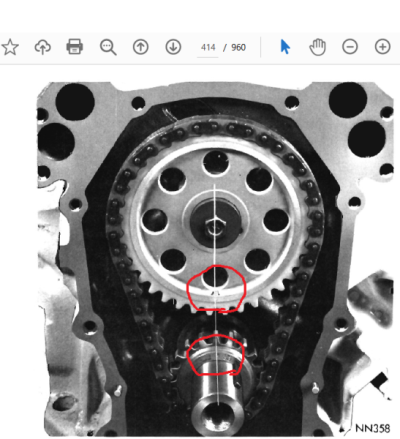Put BOTH dots at 12:00.
I respectfully disagree with you.The "Dot to dot" setting is with the cam at 6:00 and the crank at 12:00.
EVERY time that I have done this, the engine is on the #6 cylinder firing location. It took me awhile to learn that when I was younger.
I wrenched on many Chevys before I came back to Ma Mopar. The Chevy and Mopar engines do share a lot of similarities. They have the same firing orders, they have siamesed intake and exhaust ports, in the case of the LA and Chevy small block series, even more stuff is similar.
With the crank sprocket at 12:00 and the camshaft sprocket also at 12:00, you're at the #1 cylinder firing location. You need a straightedge to aim through the cam sprocket and to the crank hub to verify that they are both exactly at 12:00. Maybe some just default to the dot to dot and stab the distributor to aim toward #6 because it is easier and the end result is the same anyway.
To repeat what others have said: When you line up the cam and crank "dot to dot", the engine is then at firing of #6 (TDC of #6). But you still want to install the cam that way. Installing it with both dots at 12:00 makes it much easier to have the timing off a tooth.
Again, as others have said: Install the cam dot to dot. This way you can see the dots clearly and get them lined up properly. Later on, when you are ready to drop the distributor in, rotate the engine 360 degrees and you will be at TDC of #1. Now you can drop the distributor in with the rotor pointing at #1 (OK, near #1 - actually you want to put some advance in it, but that's another story).






 Thanks Don. lol
Thanks Don. lol
















